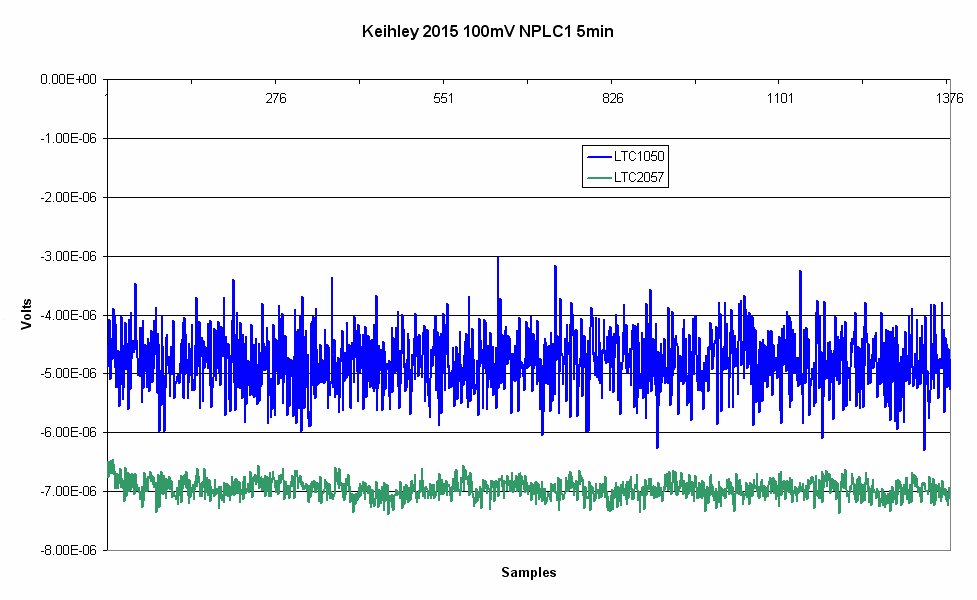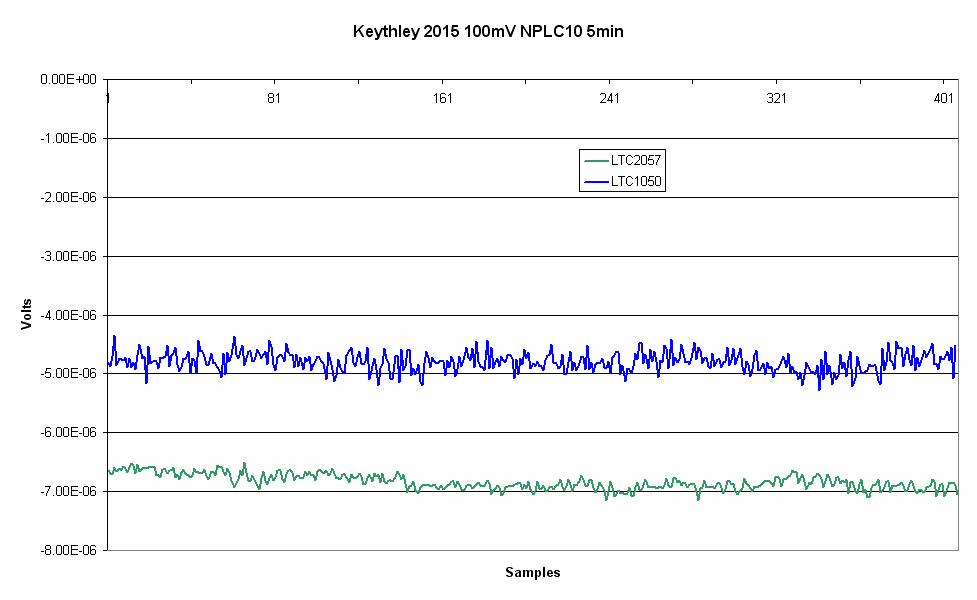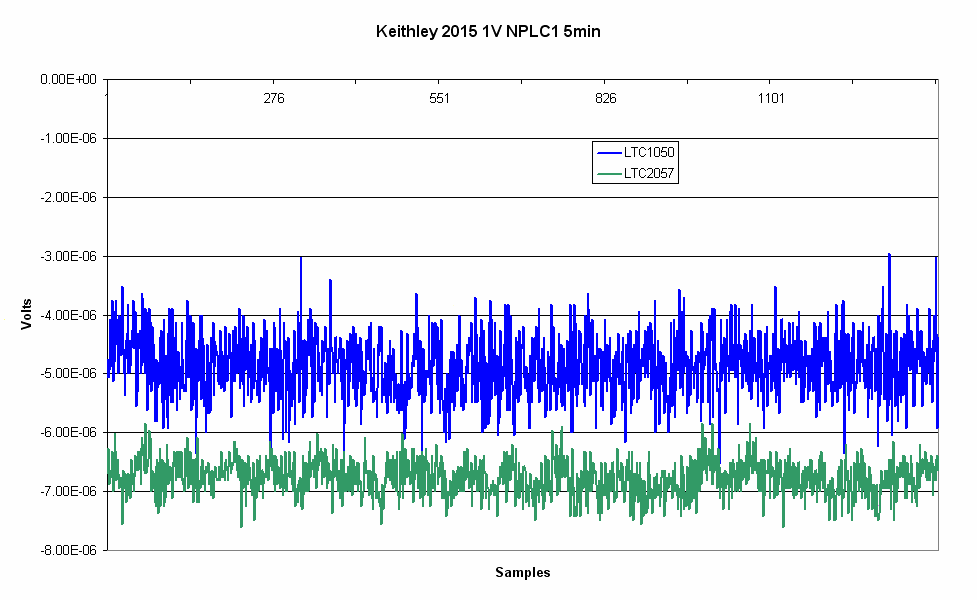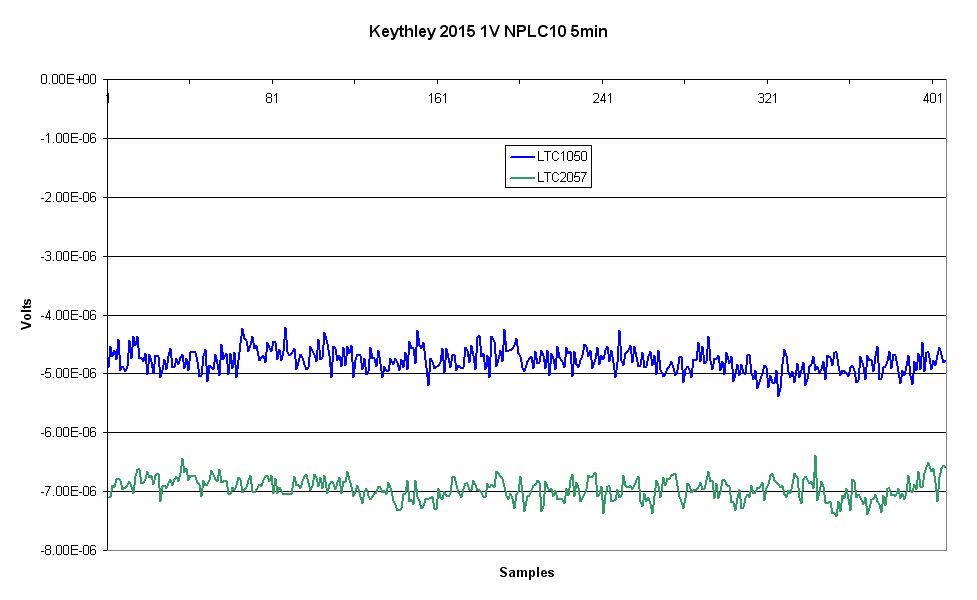I have just finished repairing my two Keithley 2015. Both units did exhibit a very high input current in Volts mode. I've measured the input current on 10V range from -10V to +10V input, using the Keithley 617 electrometer. On the first unit the current varied from -50pA at -10V input to -1400pA at +10V input and about -670pA at 0V, the second was a bit better with +160pA at -10V, -300pA at 0V and -750pA at +10V. As I could measure the input current directly, I've found very quickly that the excess current is due to leaking JFET switches, mostly Q114, Q136, Q138, Q139, Q120. To be on the safe side I've replaced additionally Q104-Q109, Q113. Also I've replaced the input buffer opamp (LTC1050) with LTC2057 on the first unit only. Now the unit #1 has input current +12pA at 0V, -120pA at +10V and +100pA at -10V, well within specs (< +/-200pA). The second unit with the original LTC1050 ended with -15pA at 0V, -95pA at +10V and -7pA at -10V. I did some noise measurements to compare two units - only 5min runs with a short on the input. There is little to no difference at NPLC0.1 on all ranges and for 10/100/1000V ranges at any NPLC setting, however for the 0.1V and 1V ranges there is a noticeable difference - see the graphs below.
Cheers
Alex



